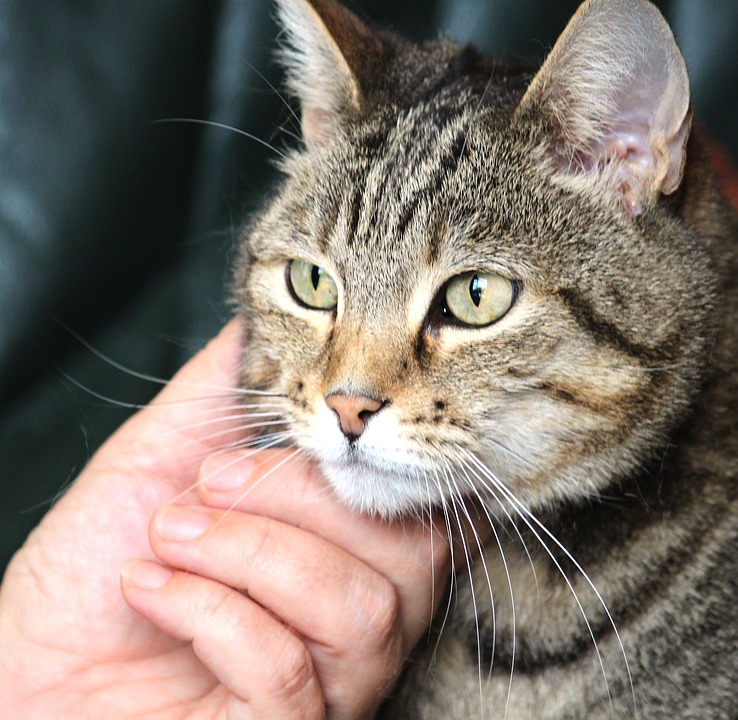Diabetes in Pets in Salt Lake City
November is nationally recognized as American Diabetes Month, but did you know that it is also Pet Diabetes Awareness Month? Diabetes in dogs and cats has become a growing epidemic throughout the years. Knowing what diabetes is, how to prevent it, and how to treat it if your pet develops it is our responsibility as pet owners to keep our best friends as healthy and happy as possible. Here are some facts about diabetes in pets, brought to you by our pet door installation Salt Lake City experts.
What Is Diabetes?

Diabetes in pets, like in humans, results from the glucose-insulin connection malfunctioning because of an insulin complication. This can either be an insulin deficiency in your pet's body (known in humans as Type 1 diabetes) or that the body isn't using its insulin effectively as a result of insulin resistance (or Type 2 diabetes). Type 1 diabetes is caused when the pancreas cannot produce insulin in the way it should, prohibiting glucose from getting into the cells of the body to be converted into energy. Type 2 is induced by your pet's diet. While there is good insulin production in their body, they will become insulin-resistant because they consume too much sugar.
The Causes and Risk Factors

Though we commonly associate obesity and diet as being causes of diabetes, there are many other risk factors that can raise your pet's risk of developing diabetes. These include breed or genetics, age, auto-immunity, GMOs, gender, toxins, an inflamed pancreas, vaccinations, metabolic syndrome, and the long-term use of steroid drugs. While your pet's diet is certainly something you need to keep a careful watch over to reduce their likelihood of developing diabetes, it certainly isn't the only possible cause.
The Signs
If your dog or cat does have diabetes, how do you recognize the signs? Symptoms of diabetes can develop gradually over time, such as the following:
- Frequent Urination - Also known as polyuria, frequent urination is an early warning sign of diabetes in both humans and pets. The excess glucose that builds up in your pet's blood ends up being too much for their kidneys to handle, so that excess sugar has to be released into their urine along with other fluids from their tissues. If you notice your pet's urine production has gone up throughout the day or that they are having accidents inside the house suddenly, this could be an indication of diabetes.
- Increased Thirst - Another classic symptom, increased thirst (known as polydipsia) comes hand-in-hand with frequent urination. The more your pet urinates the more dehydrated they will become. This dehydration also comes from the kidneys not being able to keep up with the backed up glucose in their blood.
- Increased Appetite - If your pet suddenly seems to be constantly starving despite no change in their diet, don't immediately blame it on the amount or type of food they eat. Dogs and cats with diabetes are extra hungry because the amino acids/glucose that their body needs aren't there or aren't being used properly.
- Sudden Weight Loss - Though your pet may be hungrier and eating more than normal, noticing that they are also experiencing a sudden weight loss is a prevalent symptom of diabetes because of an increased metabolism and/or their body's inability to get energy from the food they eat.
- Vomiting - If your pet's diabetes as progressed to the point of ketoacidosis before being diagnosed, vomiting is a common side effect.
- Weakness and/or Fatigue - An unusual lethargy and lack of energy in a customarily upbeat pet could be a sign that their cells are being deprived of blood sugar.
- Urinary Tract Infection - Urinary tract infections are common for pets with diabetes. This is because there is more sugar than there should be in the urine, allowing for a greater chance of bacterial growth in your pet's bladder.
- Kidney Failure - Most notably in cats, kidney failure is often one of the first diabetic diagnosis. This is due to the sugar that is not being retained in your pet's bloodstream entering into their urine, causing the kidneys to become overwhelmed with the extra sugar.
If you begin to notice some of these symptoms in your dog, contact your vet so they can be tested for diabetes before their condition worsens.
Treatment

If your dog begins showing signs of toxicity after eating chocolate, immediately contact or visit your veterinarian or a Pet Poison Helpline for treatment. Based on the size and weight of your dog and the amount they ingested, your vet may tell you to monitor them for symptoms and call back if their condition deteriorates. They can also induce vomiting to get the toxins out of the body if the chocolate was recently consumed. If they fear your dog is a more severe case, they may choose to put them on medication or IV fluids. You can also take immediate steps at home after you witness your dog get ahold of some chocolate. Giving them a teaspoon of hydrogen peroxide (mixed with something more palatable to make it easier to get down) will help them to vomit the chocolate up, or if you can't get them to vomit you can feed them to hopefully dilute the effect of the theobromine. If you see them eat a large portion of chocolate, though, it's safer to contact a vet right away for advice.
Caring for a pet with diabetes is a daunting task at first, but you'll soon find that it's a manageable condition for them to live with. The changes will become part of yours and your pet's daily life. With some special attention and hard work, your dog or cat will lead a happy and nearly normal life.
Do you have any questions? Contact Glass Pet Doors today to discuss pet door installation in Salt Lake City, perfect for helping your diabetic pets have easy access to outdoor exercise. We're happy to help!


